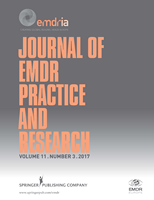
Adult PTSD and Its Treatment With EMDR: A Review of Controversies, Evidence, and Theoretical Knowledge
This article provides an overview of selective issues relating to adult posttraumatic stress disorder (PTSD) and its treatment with eye movement desensitization and reprocessing (EMDR). The article begins by providing a historical overview of PTSD, and debates about the etiology and
definition of PTSD are discussed. The most predominant theories of PTSD are summarized by highlighting how they have evolved from traditional behavioral accounts based on the assumption that PTSD is an anxiety disorder to theories that now incorporate information-processing models. This article
then examines the development of EMDR and the corresponding body of research that clearly demonstrates its efficacy for the treatment for adult PTSD. The underlying mechanisms of EMDR are discussed, with a focus on the importance of the eye movement component and how the therapeutic processes
in EMDR differ from those of traditional exposure therapy. Finally, the adaptive information-processing (AIP) model that underlies EMDR is outlined, and evidence for the model is summarized. The article concludes by suggesting future research based on questions raised about PTSD and its treatment
with EMDR when the AIP model is compared to other information-based theories of PTSD.
Keywords: EMDR; MECHANISMS OF ACTION; PTSD; REVIEW; THEORY
Document Type: Research Article
Publication date: 01 August 2009
- The Journal of EMDR Practice and Research is no longer available to subscribers on Ingenta Connect. Please go to http://connect.springerpub.com/content/sgremdr to access your online subscription to Journal of EMDR Practice and Research.
- Access Key
- Free content
- Partial Free content
- New content
- Open access content
- Partial Open access content
- Subscribed content
- Partial Subscribed content
- Free trial content